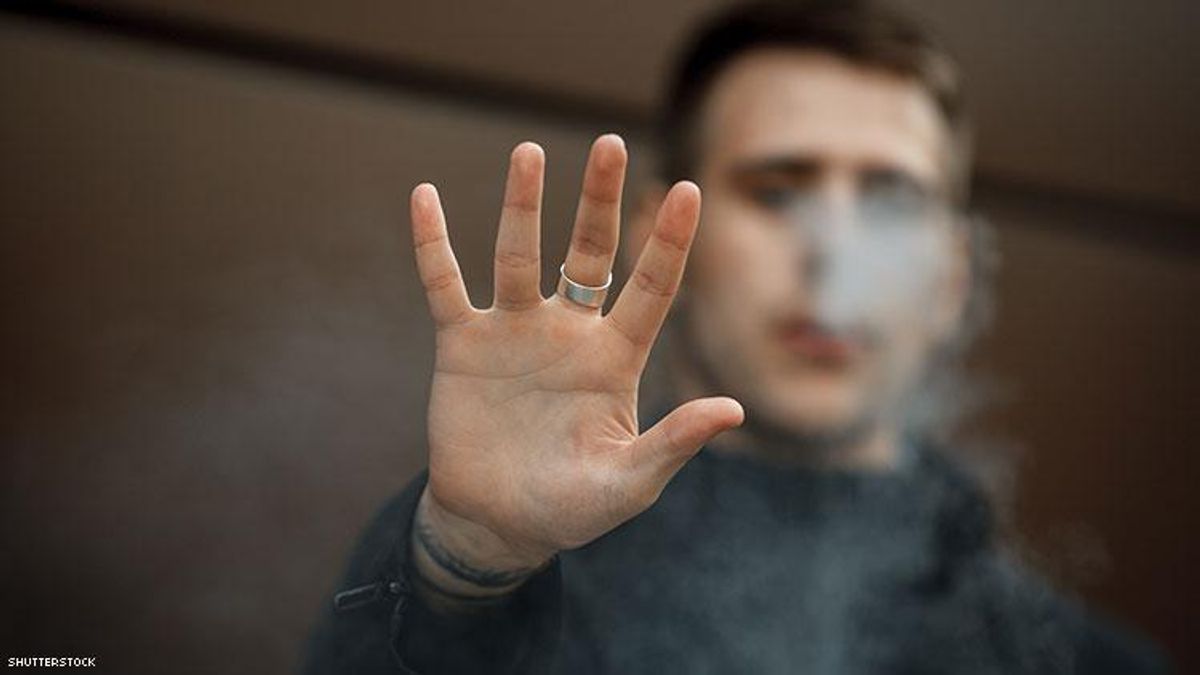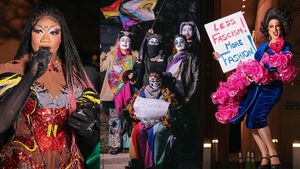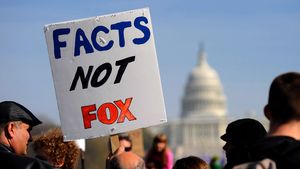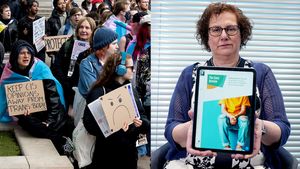On Tuesday, June 5th, San Francisco voters overwhelmingly approved Proposition E, which is intended to ban the sale of all flavored tobacco products for adults over the age of 21.
Included in this prohibition are menthol cigarettes, hookah products, and flavored cigars, all of which objectively contain tobacco. Unfortunately, politicians included electronic cigarettes (also known as e-cigarettes or vape pens) into this legislation. These products do not contain tobacco products, nor many of the tars and carcinogens associated with smoking cigarettes. By lumping vaping in with tabacco products, voters have now removed a crucial tool for reducing harm and saving lives.
LGBT individuals have smoking rates more than double that of our heterosexual counterparts. And although approximately 15.5 percent of the U.S. population smokes cigarettes, that number is nearly tripled among people living with HIV. It is now estimated that people living with HIV who smoke are six to 13 times more likely to die from lung cancer than from traditional AIDS-related causes. It is expected that more than 30,000 LGBT lives will be lost this year from smoking cigarettes alone.
Meanwhile, the e-cigarettes that are now banned in San Francisco have globally been demonstrated to be a method of reducing harm and preserving quality and quantity of life. Public Health England recently stated that by de-coupling nicotine from tobacco, vaping may reduce the risk of serious tobacco-related health problems like lung cancer by 95 percent. An analysis by New York University’s College of Global Public Health estimated that 6.6 million American lives could be saved in the next ten years if cigarette smokers switched to vaping. The Center for Disease Control and Prevention states that “E-cigarettes have the potential to benefit adult smokers who are not pregnant if used as a complete substitute for regular cigarettes and other smoked tobacco products.” Even the American Cancer Society now (cautiously) recognizes the role of e-cigarettes in reducing harm and quitting.
I understand the logic behind the proponents of Proposition E, many of whom are concerned about youth smoking and using e-cigarettes. But what has gotten lost in this argument is the fact that there is already considerable legislation preventing minors and young adults purchasing nicotine products. On March 1, 2016, the San Francisco Board of Supervisors unanimously approved the Tobacco 21 ordinance which prohibits the sale tobacco products and electronic cigarettes to any person under the age of 21-years-old, just like alcohol.
I’ve spoken with parents of teenagers about the existing laws and tried to understand how banning life-saving harm reduction devices from adults will help protect their children, especially when Proposition E does nothing to remove the sale of traditional cigarettes and non-flavored tobacco products from the store shelves. In many cases the answer was unclear. But what was evident to me was an overwhelming sense of fear and frustration that kids are attracted to nicotine products in the first place. Loving mothers (and a few fathers) shared feeling helpless that they are unable to control the drugs their children are being exposed to at school. These parents perceived flavored vaping products as a gateway to greater consumption of tobacco cigarettes. They felt they needed to do something, anything, to take a stand, since clearly law enforcement and school campuses are unwilling or unable to adequately address the problem.
Does vaping eventually lead to smoking tobacco cigarettes? Or are kids who are attracted to vaping more vulnerable to nicotine addiction in the first place? The chicken vs. egg evidence on this is still out and will likely be debated for decades to come. What we do know from the National Institutes of Health is that both vaping and smoking are on the decline in teens. We also know historically that some teens have always been drawn to nicotine products. Just like caffeine, nicotine is a stimulant that produces a temporary sense of soothing, concentration, and mood enhancement, which can be very attractive to teenagers and adults alike. Now that Proposition E has banned the sale of harm reduction replacements, are San Francisco teens and young adults going to automatically stop seeking these alluring qualities of nicotine? Or are they more likely now to seek it out in traditional cigarettes, which were never under fire from the Board Of Supervisors, and are still readily available?
As someone who lived in San Francisco for nine years, I find the passing of this ordinance to be a step backward. This wonderful city can proudly call itself a leader in providing harm reduction tools for its communities. Volunteer groups in the late 1980s were one of the nation’s first to successfully use needle exchange programs to prevent HIV. More recently, the city’s Getting to Zero consortium has committed to being the first to reach zero new HIV infections, with PrEP and treatment as prevention being critical strategies to reach this goal. These groundbreaking approaches share the common approach of harm reduction — meeting adults where they are to offer interventions that improve health and quality of life.
San Francisco could have taken a stance to prevent nicotine addiction in children and help adults stay alive at the same time. There absolutely needs to be better policy and mental health support to stop teens and young adults from ever starting smoking or vaping in the first place. But preventing kids from smoking need not inexorably deny adults from accessing harm reduction tools. San Francisco has recognized this complex reality before with needle exchange, safe injection sites, accessible methadone, and legal recreational use of marijuana. I do hope there will be a time when nicotine can receive the same sensible and scientific scrutiny.
Damon L. Jacobs is a New York-based Licensed Marriage and Family Therapist and HIV prevention specialist who focuses his work on emotional health, harm-reduction, and sexual pleasure. He is best known for championing the use of HIV pre-exposure prophylaxis (PrEP) and was honored to receive a Commissioner Special Recognition Award through the New York State Department of Health in 2016. He continues to discuss innovations in smoking cessation and harm reduction in the "Smoking, Vaping, and Heating: Rethinking Nicotine in the LGBT Community" group on Facebook. Jacobs is also an associate fellow of the R Street Institute, where he focuses on the intersection between tobacco harm reduction and harm-reduction approaches to sexual behavior.




















































































